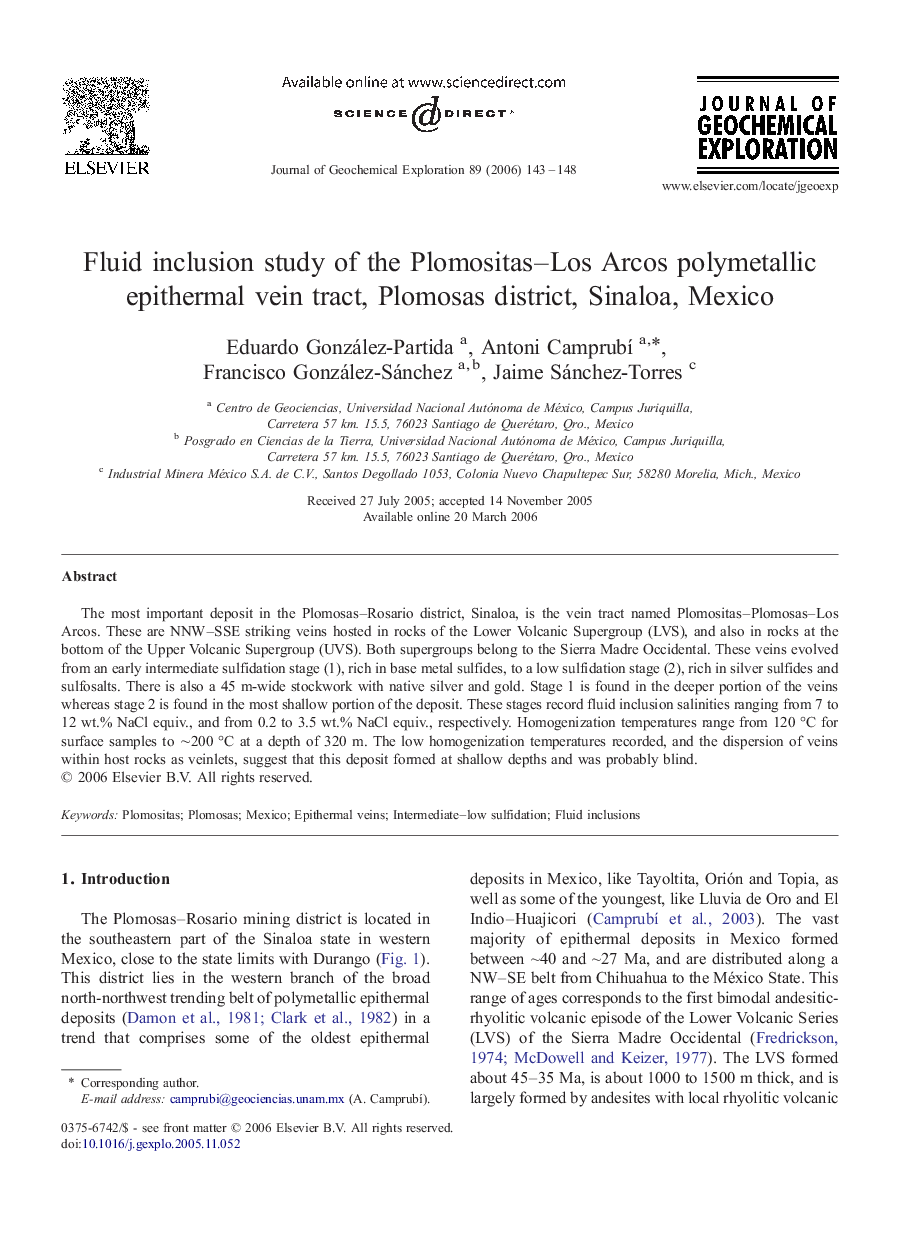| کد مقاله | کد نشریه | سال انتشار | مقاله انگلیسی | نسخه تمام متن |
|---|---|---|---|---|
| 4458437 | 1620961 | 2006 | 6 صفحه PDF | دانلود رایگان |

The most important deposit in the Plomosas–Rosario district, Sinaloa, is the vein tract named Plomositas–Plomosas–Los Arcos. These are NNW–SSE striking veins hosted in rocks of the Lower Volcanic Supergroup (LVS), and also in rocks at the bottom of the Upper Volcanic Supergroup (UVS). Both supergroups belong to the Sierra Madre Occidental. These veins evolved from an early intermediate sulfidation stage (1), rich in base metal sulfides, to a low sulfidation stage (2), rich in silver sulfides and sulfosalts. There is also a 45 m-wide stockwork with native silver and gold. Stage 1 is found in the deeper portion of the veins whereas stage 2 is found in the most shallow portion of the deposit. These stages record fluid inclusion salinities ranging from 7 to 12 wt.% NaCl equiv., and from 0.2 to 3.5 wt.% NaCl equiv., respectively. Homogenization temperatures range from 120 °C for surface samples to ∼200 °C at a depth of 320 m. The low homogenization temperatures recorded, and the dispersion of veins within host rocks as veinlets, suggest that this deposit formed at shallow depths and was probably blind.
Journal: Journal of Geochemical Exploration - Volume 89, Issues 1–3, April–June 2006, Pages 143–148